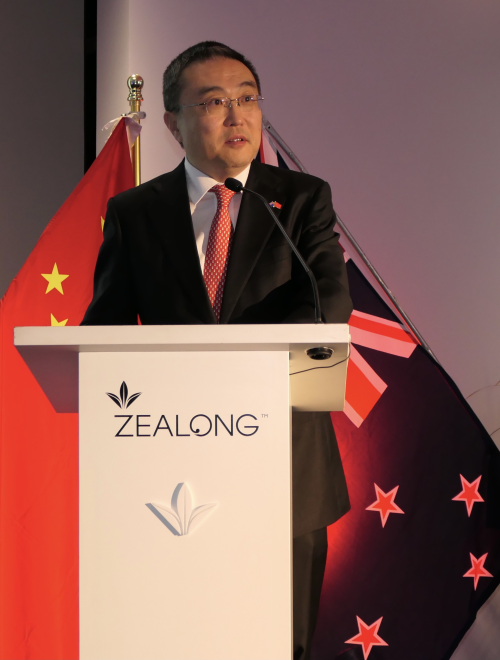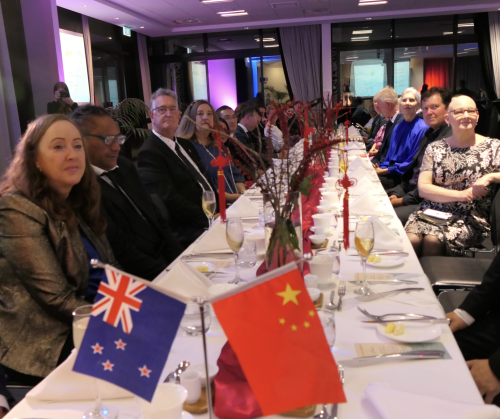
The People’s Republic of China



Distinguished guests,
Ladies and gentlemen,
Together with my colleagues, I am so glad to join Gigi and team in hosting the dinner tonight at Zealong Estate. Let me start by acknowledging Gigi and team at Zealong for the work they have done, without which the event could not have been possible. Also, a big welcome to all of you to the Tea Cultural Salon tonight.
The theme for tonight is Tea for Harmony. For if there is one physical symbol that best captures the essence of Chinese culture, it has to be tea.
The tea making and drinking tradition can be traced back to more than 4000 years ago, when Shen Nong, the founding father of Chinese agriculture and herbal medicine, discovered the health and healing benefits of tea leaves in the southern part of the country.It has since evolved to become arguably the most valued and most popular drink in China, and at the same time a key defining element in Chinese culture.
Chinese tea, particularly the original green tea, is more likely to be reserved or even withdrawn in its flavour.
Having absorbed the “ cream of heaven and earth”, tea can only grow in an environment where there is harmony between nature and humanity. And its aroma and flavour can only be fully appreciated when the heart and mind of the person that drinks the tea is at peace.
While tea drinking is thus something very personal and private, making a toast of tea can also be an important way to pay tribute and show respect.Tea, in that sense, embodies purity, humility, harmony, amity and respect, some of the key traits in Chinese cultural spirituality.
In traditional Chinese culture, the making and drinking of tea is in and of itself an art. It also goes together with other art forms, like calligraphy, painting, poetry, the making and appreciation of music, and of course the enjoyment of fine food.
Tea is also one of the earliest globalized products in the world, although that part of its history is sometimes checkered. Trade in tea started in the vicinity of China centuries ago through the Tea and Horse Routes, which may or may not overlap with the better known Silk Roads. Later on, tea was brought gradually to the farther corners of the world. By the 17th century, tea had become the biggest export from China to some European countries. Faced with a depleting deficit, some of them decided to reciprocate by sending our way opium and gunboats. Hence the first Opium War in 1840, about the same time when the Waitangi Treaty was signed here in New Zealand. And the rest is history.
Of course, our world is a very different and much better place now, and tea making and drinking has become a truly global phenomenon that can bring people from different countries together.
That is why the UNGA, at its 74th session in 2019, designated 21st of May each year as International Tea Day, to promote harmony, sustainability and common prosperity across the world.
Here in New Zealand, there is no better place than the Zealong Estate to mark the occasion and celebrate our common pursuits as humanity as well as the mutually respectful and beneficial partnership between New Zealand and China.
Again, let me thank Gigi and team. You are just incredible. With that, I shall stop, and leave you to enjoy the wonderful Chinese tea produced here at Zealong, one of the best in the world.
Thank you!



